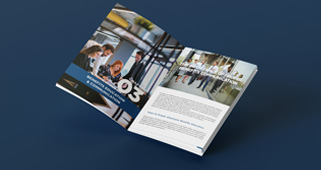From medical, mental health, dental, and vision—even retirement planning and 401(k) contributions—you’ve taken great care to select the best benefits packages for your employees. Now, your challenge is getting the word out about everything your organization has to offer. Doing so in an effective way is a challenge for even the most experienced human resources professionals.
Oftentimes, messages are ignored, and action items are put off, resulting in a workforce that doesn’t know what’s available to them, and can’t take advantage of the full suite of benefits at their disposal. Need guidance on how to avoid some of the most common communications errors keeping your human resources department from getting its message across? Read on for tips from the employee benefits experts at Benely!
Employee Benefits Communication Errors You Can Prevent
1. Neglecting to Communicate Information About Benefits
For growing companies who are expanding to hire more personnel, the recruitment and new hire stage can be a very effective phase to introduce benefit options. Consider incorporating benefits information or highlighting a few of the most important or unique offerings in your job postings for new positions. In a blurb about the company’s culture, you can, for example, highlight the importance and availability of mental health and wellness programs at your firm. The key is to put your best foot forward and attract employees who will value and take advantage of what you can offer, making the most of your benefit dollars.
At the new hire stage, information about benefits can seem overwhelming to an incoming employee who is absorbing a lot of other data at one time. A short session with an HR rep during orientation can include a presentation about available options the employee can select from. It also creates a perfect time and space for an employee to ask questions and receive individual support.
2. Forgetting to Prepare Your Employees for Open Enrollment
When open enrollment begins, many human resources professionals will send an email or two alerting employees to the change. But education beforehand is key to ensuring employees choose the best options for their circumstances, especially if those circumstances have changed. For new employees, have a team of human resource representatives available to introduce the website your employees will be using to review and compare health plans and self-enroll. The benefit of showing employees what it will actually look like to choose their plan can help to eliminate overwhelming requests for support during enrollment and a resulting lack of support.
3. Failing to Highlight the Differences Between Plans You Offer
Again, the period of time right before open enrollment is an excellent time for benefits communication, because your employees will have more of your focused attention. Consider sending around a survey to your employees to determine whether they’re comfortable with their current plans.
If coverage is an issue, have a human resources representative follow up with information about more comprehensive offerings tailored to your employee’s concerns, whether it be mental health, pharmaceutical costs, or financial planning. If cost is an issue, now is a great time to introduce the benefits of some of the lower premium health plans your company offers that may be suitable for certain employees, particularly younger employees without dependents.
4. Weak Communication Channels
Of course, too many notifications can be annoying, and repetitive messaging can cause employees to start ignoring your outreach attempts altogether. Experimenting with what communication channels get which employees’ attention is a great way to create a more precise messaging strategy in the future. Keeping tabs on demographics doesn’t hurt either – for example, do younger employees respond to Slack notifications? Do older employees check out flyers and other paper products in the break room?
You can get creative here, too! There are more ways than ever before to reach your employees, especially as the workforce transitions to remote and hybrid work options. Have your human resources department considered webinars or virtual benefit fairs? With more employees feeling comfortable with video meeting technology, now is the perfect time to expand your outreach and see what sticks.
5. Forgetting the Message and Focusing Only on Delivery
While you’re taking in the last tip, don’t forget what’s most important: getting the message across clearly and concisely. A fun webinar or an eye-catching flyer is only as effective as the content of the communication. Need to know if you’re coming across in a way that your employees can understand? Consider testing your message with a small group of employees. Have a human resource representative deliver the communication to a “test group,” and then follow up to find out the employees’ questions. If a lot of the same questions are coming up, you’ll know to address those points more clearly in the message you send out to the entire workforce.
6. The Right Message, the Wrong Time
You’re wondering why you haven’t gotten any responses or inquiries to the message you communicated via email. Did you send it on a Friday afternoon? Your employees have a lot of items competing for their attention, so it helps to make sure you’re getting your message across in a way that meets employees where they are in whatever way that’s possible. This can be accomplished by presenting your information at a time that it’s likely to feel more pressing or important.
For example, when employees reach a point where they may be ten years away from retirement, send information highlighting your retirement planning tools. The beginning of the year (after new year’s resolutions have been made) is a great time to remind everyone of your fitness and wellbeing programs. If your company is offering a stipend for work from home equipment, include information about ergonomic product choices and details about your at-home wellness benefits in the same communication.
7. Your HR Representatives Don’t Know the Right Time to Intervene
When it comes to mental health and employee assistance and support programs, it’s often difficult for employees to ask for help. It can even be embarrassing for some employees who have questions, and many won’t take advantage of the benefits you offer for this reason. Training human resources representatives and managers alike to notice signs of burnout, anxiety, and depression can go a long way to get help to employees who need it.
8. Your Employees Have Option Paralysis
If you offer a lot of varied benefits to your employees, you are doing the right thing without a doubt. The only downside? If you present your benefits piecemeal to your employees, they may become overwhelmed. A great solution to the option paralysis your workforce might experience is to highlight your benefits in packages first, making recommendations based on the stage of life, budget, and primary concern.
9. You’re Not Taking Advantage of Technology
New technology firms offer the latest online benefits enrollment and even provide personalized hubs for your organization. Some vendors even can analyze employee data, including the number, type, and costs of claims employees have made over the past year, and ultimately recommend the right plan for each individual. Working with an experienced team of human resources consultants can give you an edge if you’re looking to hire a vendor for online benefits enrollment.
10. Overlooking the Power of Having HR Consultants on Your Side
Even the most seasoned human resources team can use a hand from time to time. At Benely, we’re experts in all things human resources. Our signature HR audit will help you identify the effectiveness of your current HR department. Ready to simplify your HR work and reach your employees successfully? Contact Benely or request a demo.






